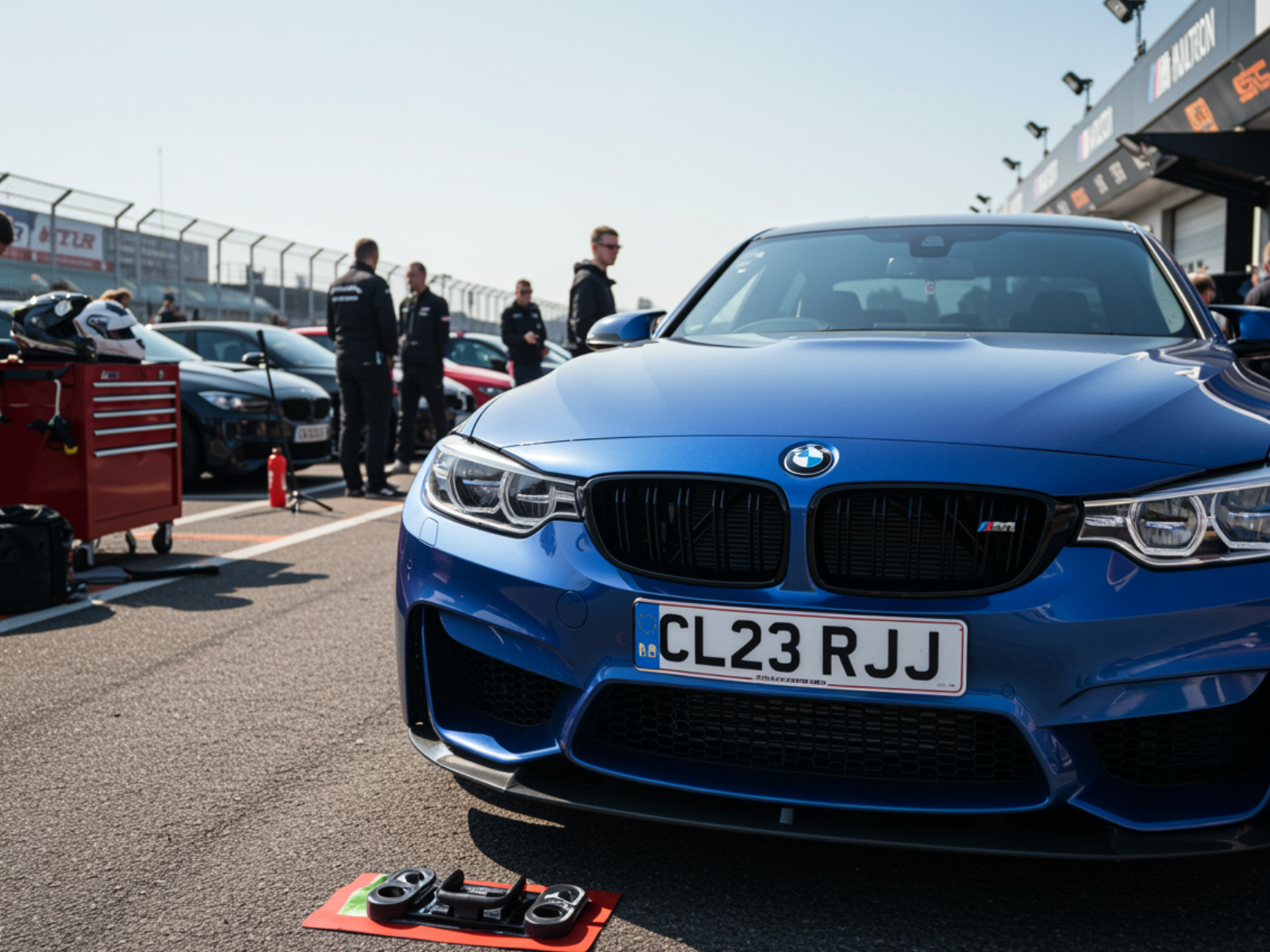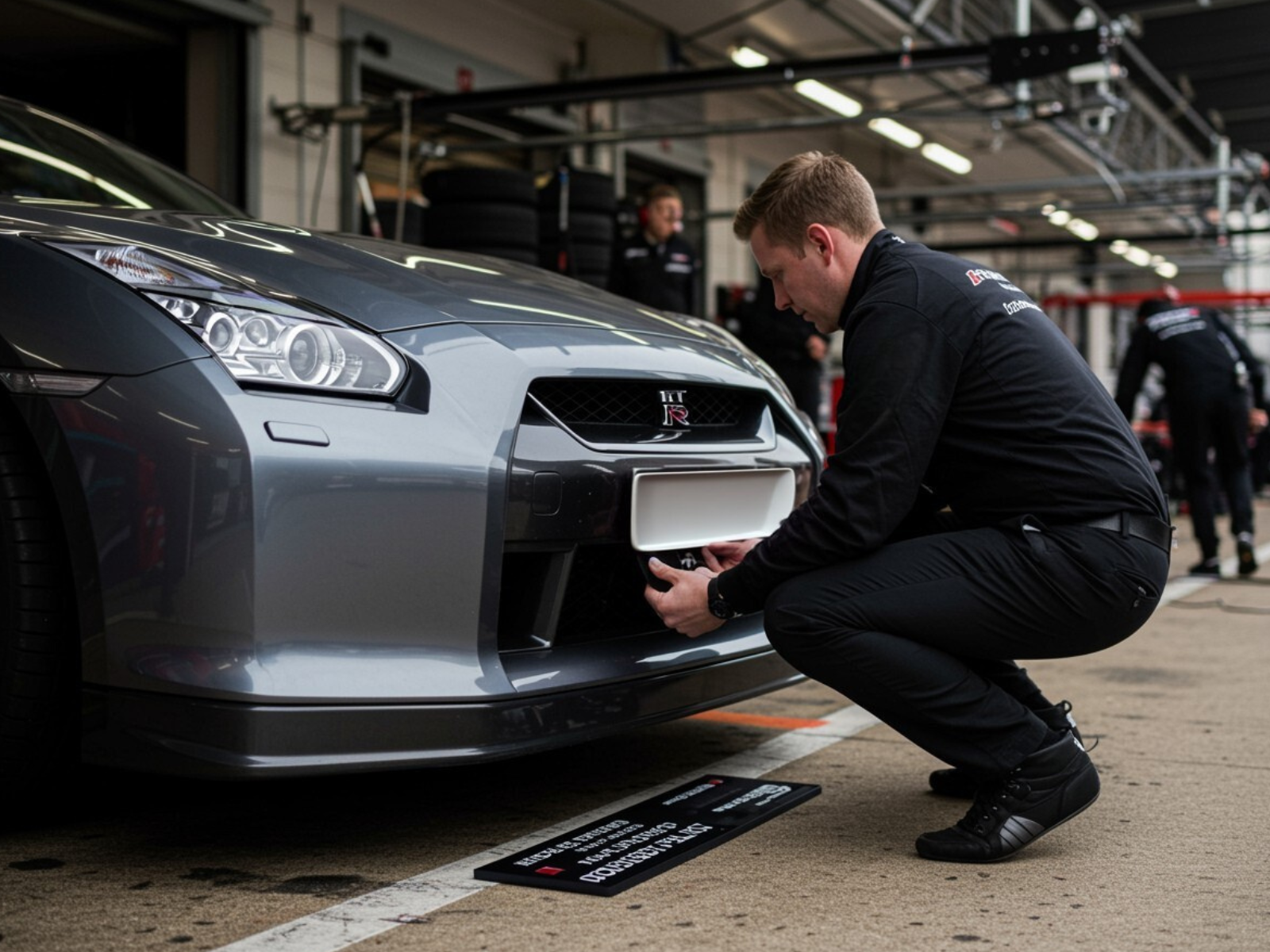Track days bring drivers together to push their cars in a safe, controlled space, and the way a car looks tends to matter almost as much as how it performs. That’s where this track day show plates guide proves useful. Unlike standard road plates, show plates are strictly for off-road use in the paddock, pit lane, or during static displays.
For many drivers, these plates are more than just decoration. They give space to highlight sponsors, bring style to photos, and test different paddock plate ideas without affecting the car’s everyday plates. In this guide, we’ll look at everything from styling options and materials to quick-change fittings and removal systems. Expect plenty of practical advice for anyone keen to polish their paddock presence.
What Makes a Show Plate Track-Day Friendly

A plate made for track use isn’t only about looking sharp in the paddock; it needs to withstand the conditions of a long day at the circuit. Enthusiasts often seek designs that mix personality with practicality. The best options tend to be lightweight, tough, and resistant to rain or heat — so they don’t crack or warp after hours of use.
Style still matters though. Event photographers prefer plates that stand out in pictures, which explains why 3D and 4D lettering are popular. A matte finish often reduces glare in bright light, making cars easier to capture, whereas gloss brings a high-shine effect for static displays.
At the end of the day, a track-friendly show plate should be tough, simple to swap out, and clear enough to reinforce your team’s identity whenever spectators or sponsors are nearby.
Legalities and Limitations for Track Events
Any track day show plates guide should spell out one fact clearly: show plates are not legal for use on public roads in the UK. They’re fine in the paddock, during photo sessions, or on display stands, but your road-legal plates must be back on before leaving the venue.
Most organisers allow flexibility in the paddock, yet rules can vary. Some tracks may require legal plates to be visible even when off the circuit, so it’s smart to check before you travel. Ignore that advice and you might be refused entry to a session.
The best approach is simple: carry your legal plates with you, use quick-release fixings or removal systems to swap easily, and refit them before heading home. This way, your car stays compliant while still giving you the chance to enjoy the styling side of track days.
Materials and Finishes for High-Speed Conditions
Track use puts far more pressure on plates than normal road driving. Loose gravel, heavy braking, and constant exposure to water or dirt can all take their toll. That’s why material choice really matters. Many of the best plates for track cars use acrylic or ABS plastic — both light and resilient enough to handle knocks without splitting.
The surface finish plays a role too. A matte coating keeps reflections out of paddock photos, while a gloss one delivers shine for static displays. Drivers who plan on using plates regularly often opt for sealed edges and fonts that resist moisture and dust, helping plates stay clean and sharp-looking after a long day.
Whether you’re testing new ideas or sticking with a proven design, resilience usually proves just as important as style.
How to Fit and Remove Plates Quickly
Switching between legal plates and show plates doesn’t need to be a chore. Many drivers now rely on quick-release fixings, strong magnets, or reusable pads. These methods avoid drilling fresh holes and make swaps simple.
A typical routine looks like this:
- Keep your road plates safe in the boot.
- Fit your chosen paddock plates on arrival using your preferred fixing method.
- Before heading home, swap back to the legal set securely.
This quick-change approach is more than just convenient. It reduces rattle when the car’s idling and helps keep plates safe even at higher speeds. For anyone exploring new styling ideas, it’s a practical way to move between paddock display and road driving.
Presentation Tips for Paddock and Pit Areas

Track days often feel just as social as they do competitive, and the paddock is where cars are usually most closely inspected. That’s why many enthusiasts look to tie their plates in with the car’s colour scheme or sponsor logos. Borders, custom fonts, or layered 4D lettering can all make plates stand out in walkarounds and photos.
Practical touches help too. Frames and rubber washers cut down rattles, and quick-release fittings give a snug fit that holds steady during idle or display.
For those who want to push presentation further, plates can double as a branding tool. Whether it’s a garage name, club identity, or a social handle, the space can work as an extra platform during busy paddock hours. In that way, show plates add both personality and presence.
A carefully chosen set of track day show plates can bring polish to your whole setup. They highlight sponsors, add flair to photos, and keep legal plates safe for the road. The key is treating them as off-road accessories. With the right materials, finishes, and quick-change fittings, you’ll have plates that blend durability with style.
Ready to create your own? Explore ourshow number plates builder to design plates that match your car’s look, orcontact us for guidance on the best event-grade options.
